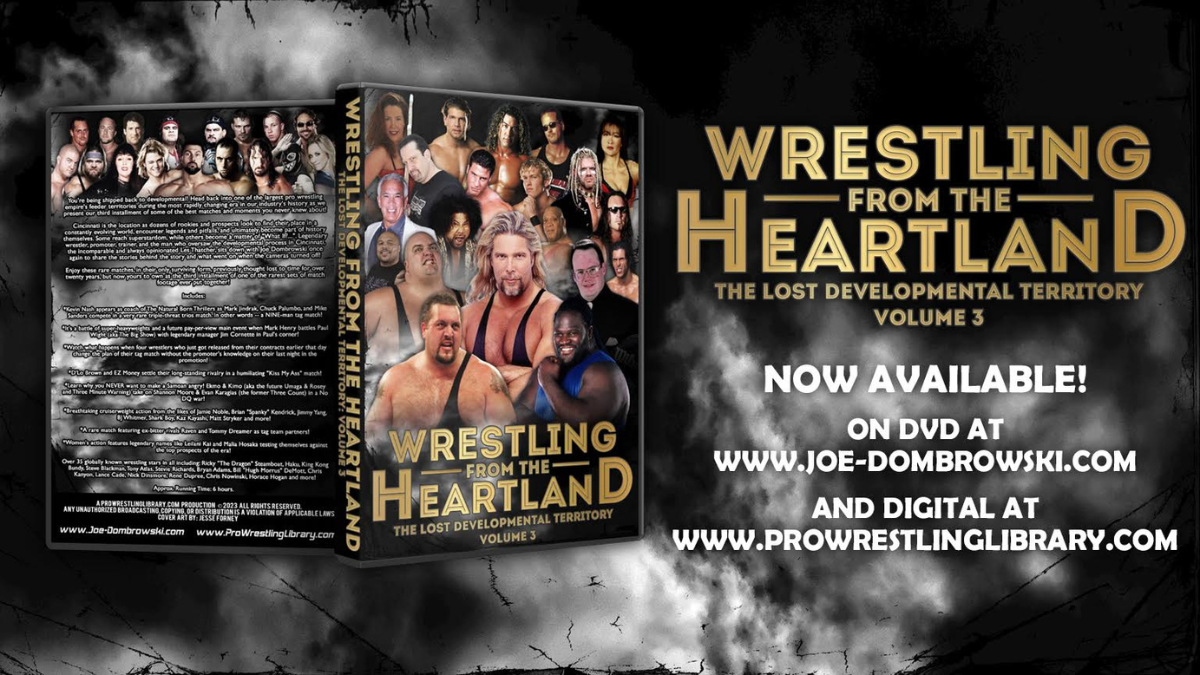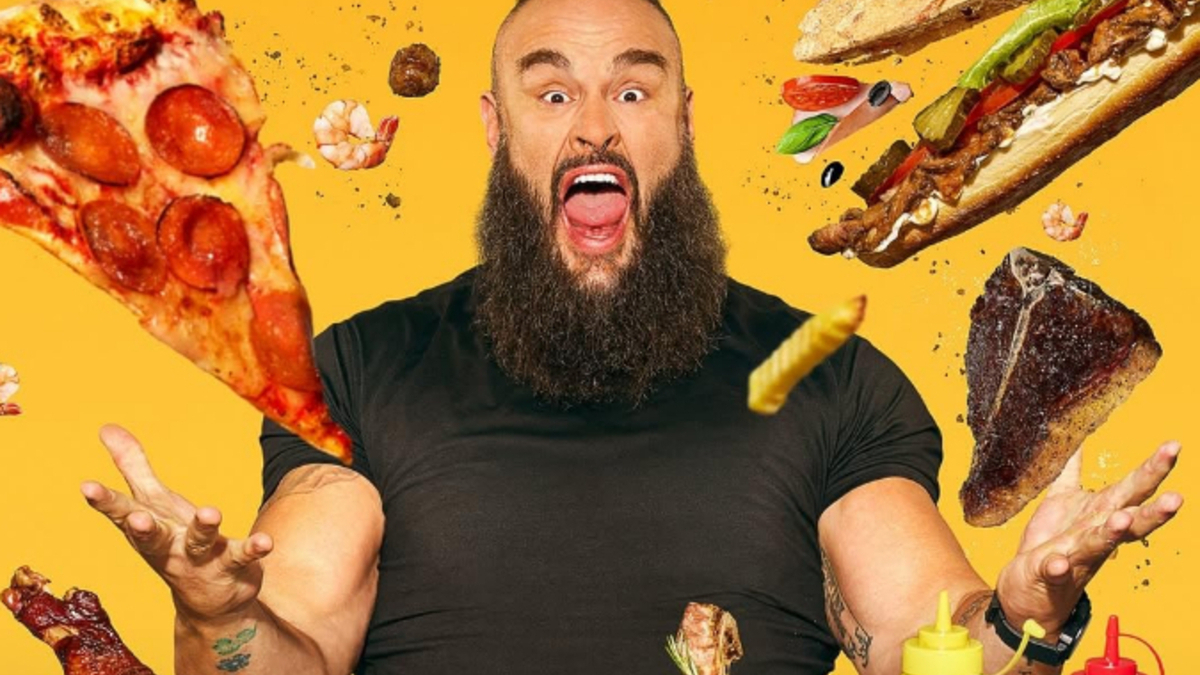Third Heartland Wrestling Association collection a good mix of ring vets and rookies
In the journey of any professional wrestler, time spent in a developmental system or territory can work wonders to their future success as “superstars” as they may be referred to. Some of the business’ top stars, whether they be past and present, paid their dues respectively with a run in developmental. Territories and farming systems such as FCW (Florida Championship Wrestling), it’s predecessors OVW (Ohio Valley Wrestling) and DSW (Deep South Wrestling), or even on a much more televised scale like NXT.
However, there is one additional territory that often gets forgotten despite being the first home to many of the industry’s standout performers of tomorrow and ring vets who looked to fine tune their talents with younger upstarts. This is the Midwest-based territory run by Les Thatcher known as HWA (Heartland Wrestling Association).
Wrestling from the Heartland: The Lost Developmental Territory – Volume 3 serves as the third installment to a series documenting the highlights and hidden gems of some of HWA’s finest matches and moments rarely recognized by the common wrestling fan. In this particular installment of the series, I found myself watching old timers like “Mr. USA” Tony Atlas in action against a fellow with a brooding gimmick named Bobby Casanova (seems to have never made it further than his time in HWA), Leilani Kai in a six woman tag team match with a hodgepodge of female developmental hopefuls, King Kong Bundy (honestly didn’t know he was still active into the 2000s) going head-to-head against future ROH veteran B.J. Whitmer (recently fired by AEW), and to my surprise essentially a lost footage matchup between two of tomorrow’s (I guess yesterday’s now?) biggest behemoths in Mark Henry and Paul Wight/The Big Show accompanied by the legendary yet highly controversial Jim Cornette!
I was certainly treated to a ton of surprising matchups and random faces popping everywhere in between throughout the duration of this installment, but what I really came to appreciate throughout my viewing experience was getting to see a side of some wrestlers I didn’t know were willing to go through the developmental stages and just ride with it. No complaints, no half-assed performances, just guys and gals of the business willing to put in the work in a territory like the HWA whether they’ve already been fairly storied vets by that point or carry some form of name value. Prime example, I really liked this sit-down segment wherein Thatcher conducts an interview with Stevie Richards (who was absolutely dripped out with a kick-ass vintage PS2 t-shirt) commending him on his willingness to work with and help out every young wrestler that showed up in his time with the HWA, whether they were more advanced upstarts or absolute beginners. Richards went on to address his passion for the business and his desire to be a helping hand, bringing up a time where he was really down on himself, out of shape, lacking confidence, but working with young talent in the HWA helped him elevate himself, his self-esteem, and it became clear he was almost a mentor to the young bucks. He ended the sit-down by saying “the HWA was probably one of the best things to ever happen in my career.”
I thought this was really cool because despite Richards being fairly young into his wrestling career at that point, he already spent time working as a mainstay of ECW and a short run in WCW, but he was certainly no schmuck when it came to the business. There are always legends that are handed their fair share of respect when it comes to mentors and brilliant minds of the business, but when you begin to recognize some of the more forgotten veterans in this bracket, it shows you some of the unsung heroes in wrestling. Another case in point but this time on the female side, I think it’s worth taking the time to recognize Malia Hosaka also.
Now, I only recently got introduced to Hosaka after watching a YouTube video trashing the creation of two pointless WCW women’s championship belts in the effort to jumpstart a prominent women’s division. Before this, I was not familiar with her, nor had I seen any footage of her in-ring work, but after watching that video I took the time to do so. Lo and behold, this installment in the series features Hosaka in one-on-one action against a woman named Hellena Heavenly… and a random swerve comes calling when Matt Stryker (the one that’s not an ex-teacher) and B.J. Whitmer get involved in the match to help cover some of Hellena’s shortcomings as a newbie (as noted with the commentary briefings in the footage). Despite not being the primary showcase in the match, I came to appreciate the somewhat ahead of her time abilities possessed by Hosaka. She even had moments in the match working Matt Stryker and holding her own. As the commentary notes, Hosaka worked for WCW and spent developmental years with the WWF. Unfortunately, it seems the federation up north never found the means to feature Hosaka on a mainstream level and she largely went under the radar, yet still wrestling to this day going strong at 53-years-old at the time of this writing. Hats off to Hosaka for being a renowned veteran of women’s wrestling and definitely an unsung hero more than worthy of praise.
At a whopping run time of over six hours of action, Wrestling from the Heartland: The Lost Developmental Territory – Volume 3, presented by the Pro Wrestling Library brought to you by Joe Dombrowski, certainly offers a more than adequate amount of lost footage and moments to provide the viewer with a compelling experience. Aside from sitting back and enjoying the matches, take the time to appreciate the commendable efforts of both ring vets and rookies of the time working their way up the ladder — an enhanced level of perspective for the developmental stages of pro wrestling, if you will!
RELATED LINKS
- Order Wrestling from the Heartland: The Lost Developmental Territory – Volume 3 on DVD
- Order Wrestling from the Heartland: The Lost Developmental Territory – Volume 3on digital




